Ah, the humble staircase. They are a necessary feature of so many structures we come across in everyday life, from homes and offices to buildings and shopping centres. Steel provides the skeleton of most of the staircases we use, and its versatile and malleable nature lends itself to be uses for a wide variety of applications in staircase architecture. Let’s have a look at some of the top types of staircase design.
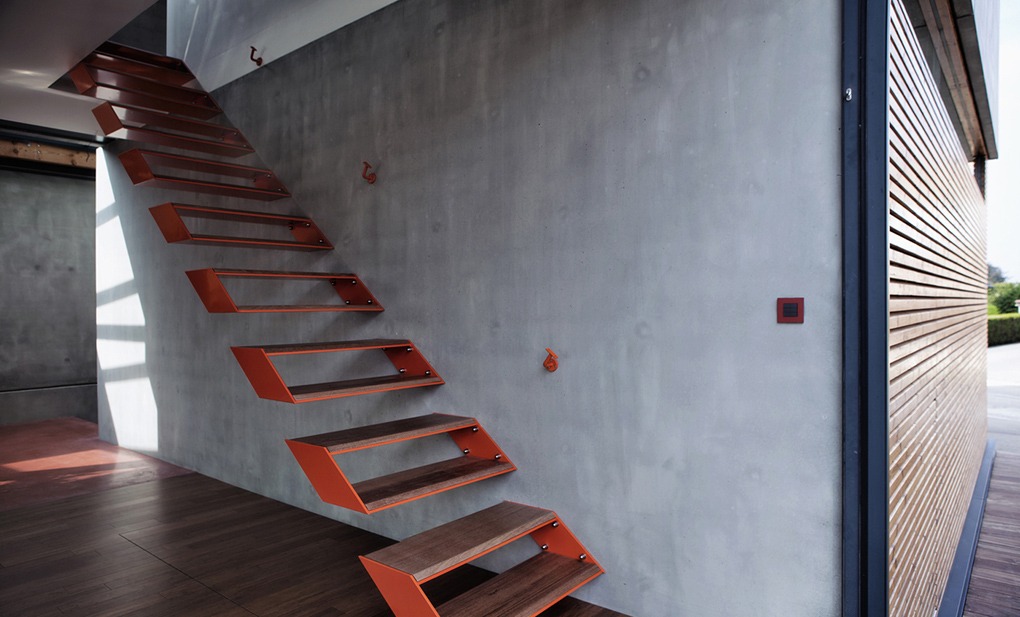
Staircases are a necessary feature for many structures we come across everyday. Here are some of the top types of staircase design made from steel.
Straight
Straight staircases are probably the most common and widespread of all the designs, due in part to its functionality and simplicity. The straight staircase is convenient for travelling up and down and poses no problems with corners that may hinder travel , but it is also a limited design in nature. One long flight will eventually have to turn back on itself in some way due to height restrictions, which, in the past, gave way to innovation of new and clever designs.
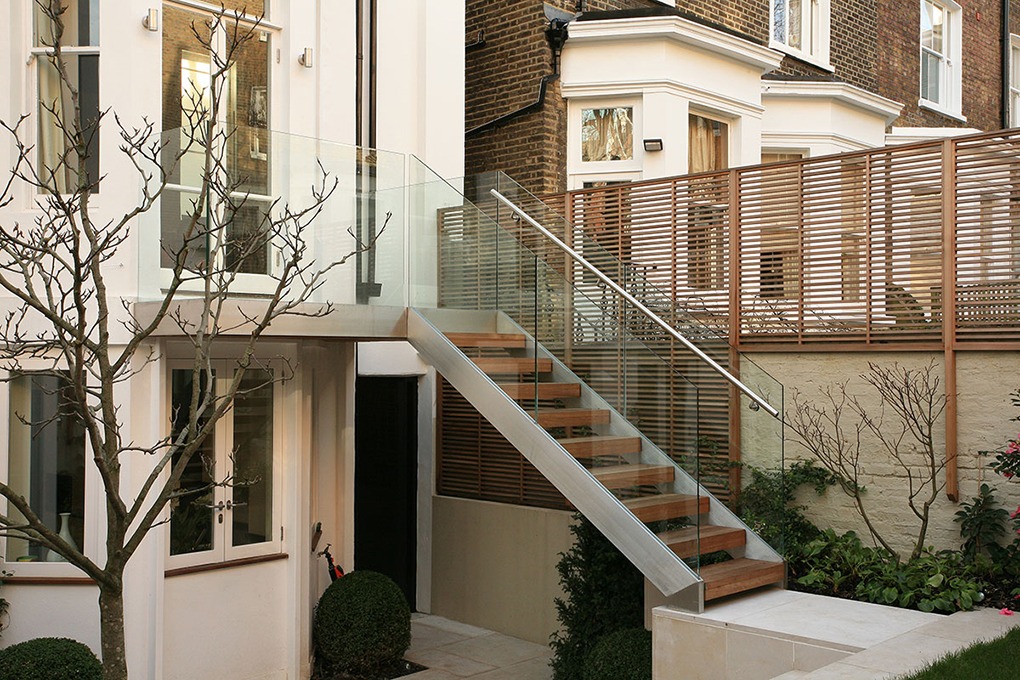
Winder
Winder stairs turn at 90 or 180 degrees, however, they are without a landing, using wedged-shaped stairs to form the turn. Architecturally, these kinds of staircases employ flowing lines and often result in more ornate designs. They promote continual travel, much like a spiral staircase, but are an inherently safer stair type. You can have either a single winder, which turns at 90 degrees, usually once and generally at the bottom of the staircase (so it is easier to see); or you can have a double winder, which turn at 180 degrees, often multiple times times, and are more compact, although can be smoother, less tight, and occupy more space.
Single Winder
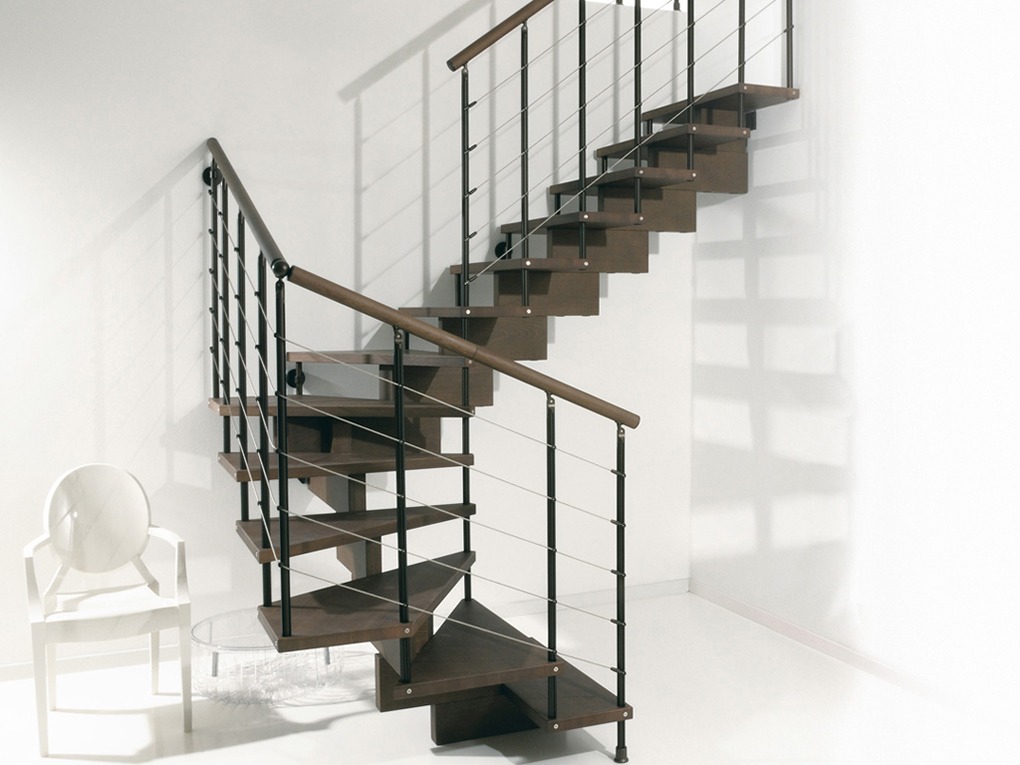
Double Winder
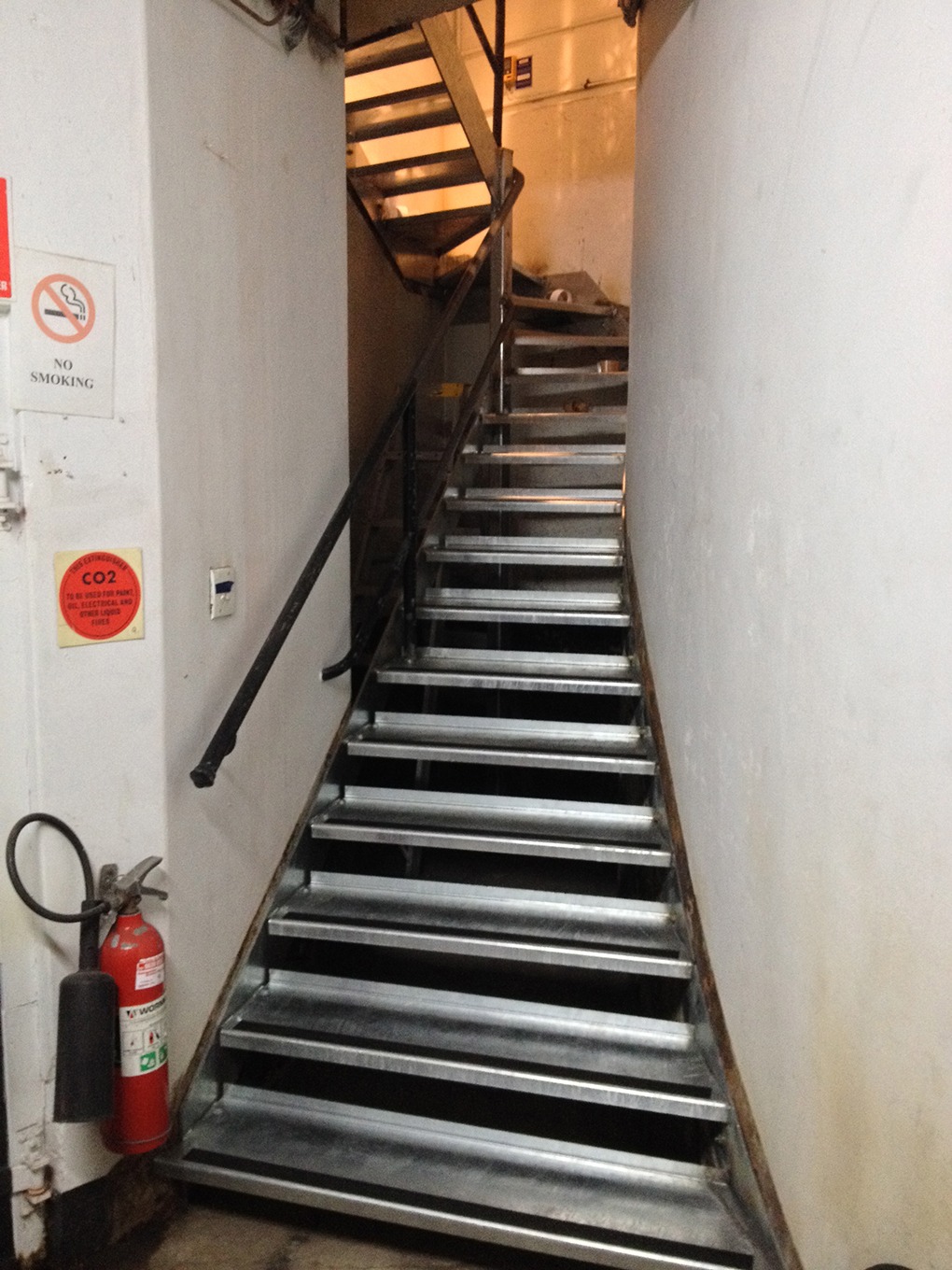
Quarter Landing Stairs
Quarter Landing stairs are similar to single winders in that they turn 90 degrees, but are also reminiscent of straight stairs in that they feature no curved steps, instead, to make their turn, feature a flat landing. The presence of a landing reduces the amount of stairs in the flight, making it easier to walk, and the presence of a landing makes the turn far safer.
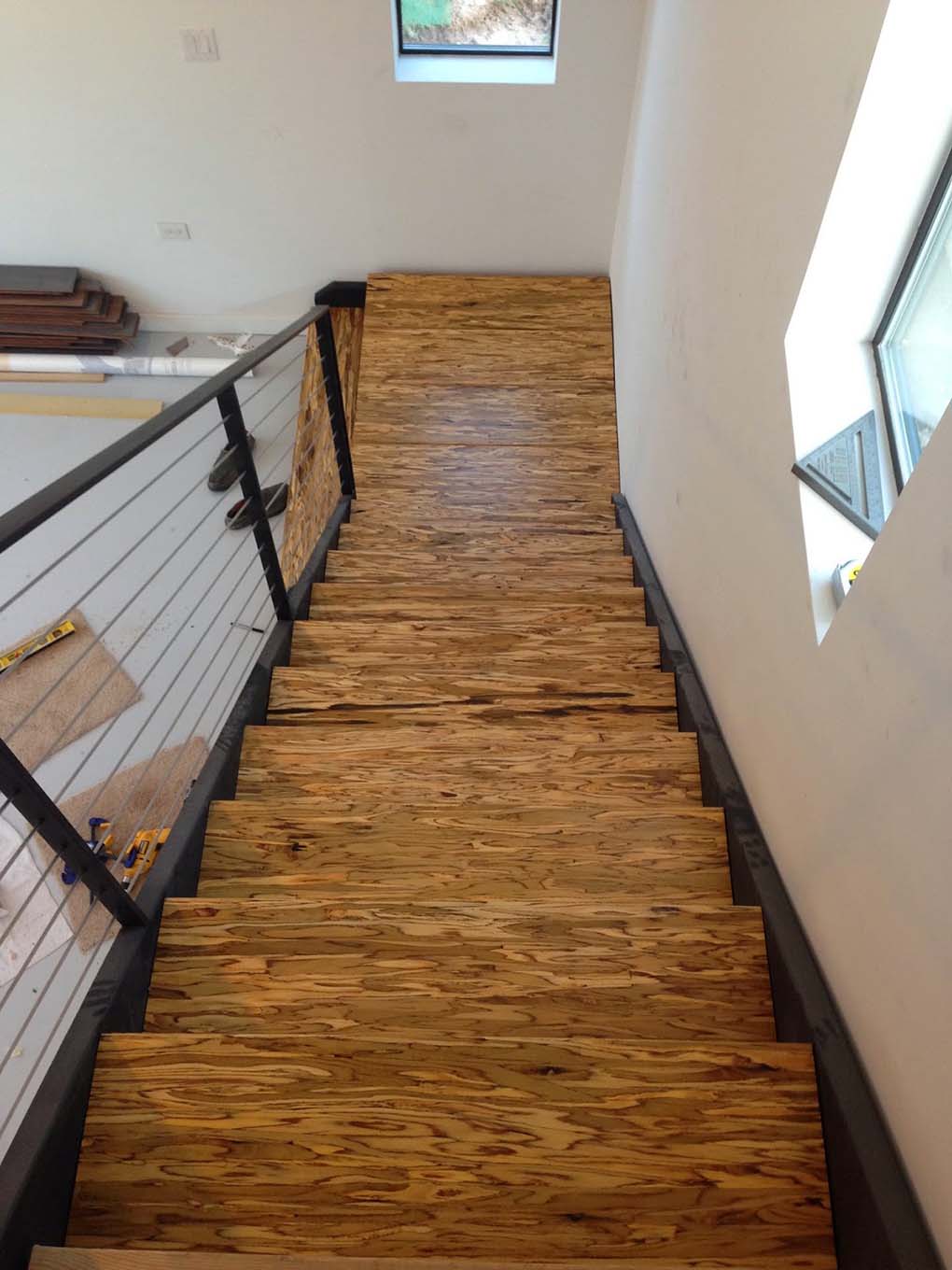
Half Landing Stairs
Similar to the double winder, the half landing staircase design turns a full 180 degrees, making its turn via a single flat landing. The landing divides the flight into two, making the amount of step in each flight shorter and allowing a place to rest in between. This type of stair design is safe, convenient and has great functional.
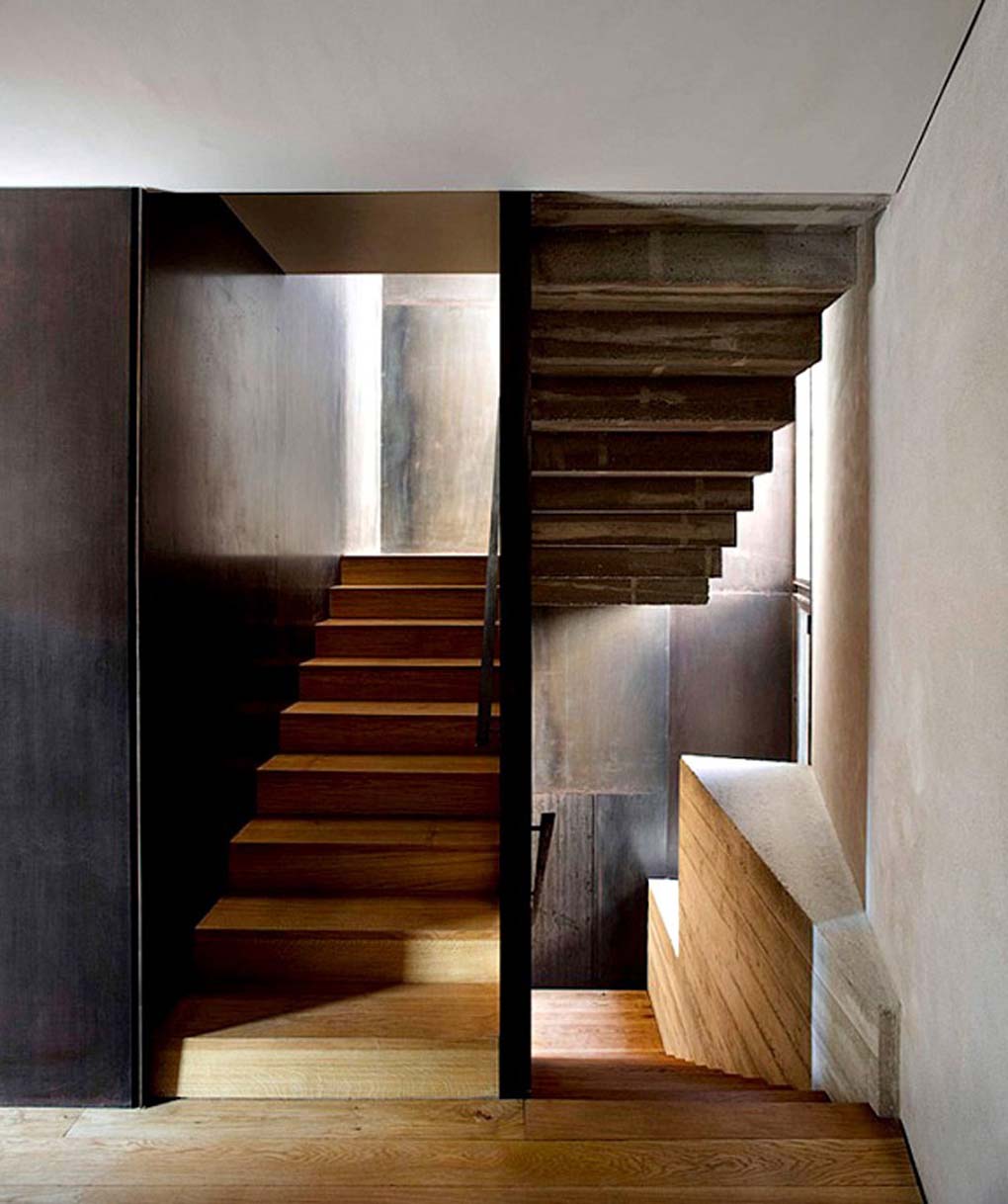
Curved
Curved staircases tend to favour aesthetic over functionality. The angle of the flight will resemble an arch, with no right angles. This means that all stairs will be wedged to some degree to account for the curve of the flight. These types of designs tend to be elegant in nature, preferred for use in home and particular office applications.
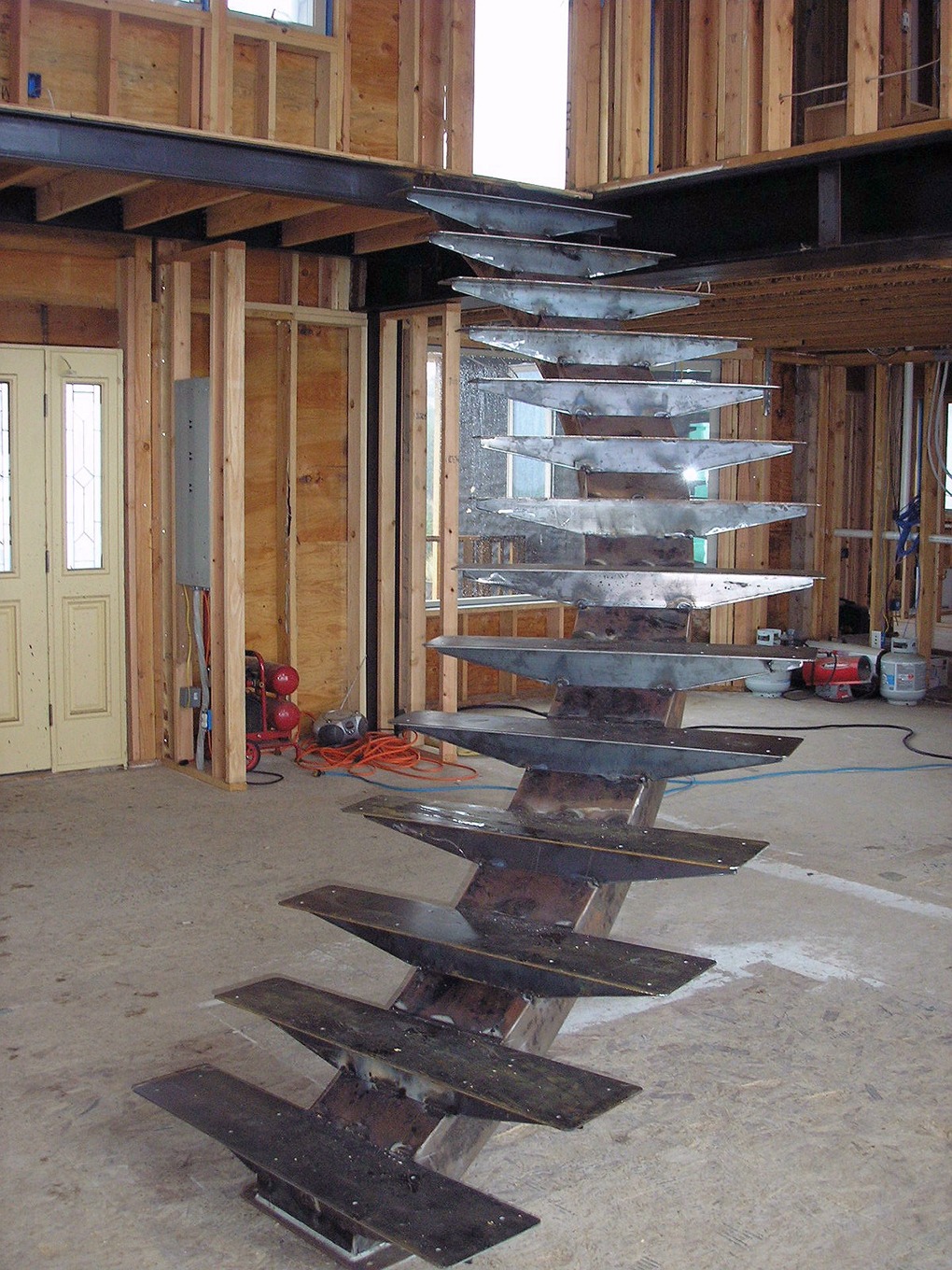
Spiral
Spiral stair cases are also curved, but in a much tighter arc, eventually coming a full 360 degrees, resembling a circle. They also favour aesthetics over functionality, but have been very useful in the past for placing a staircase in tight places (in favour of a ladder of very high steps). Often ornamental steel stairs, they are inconvenient for fast travel. Steel is a favoured material for use in spiral staircases due to its versatile and malleable nature.
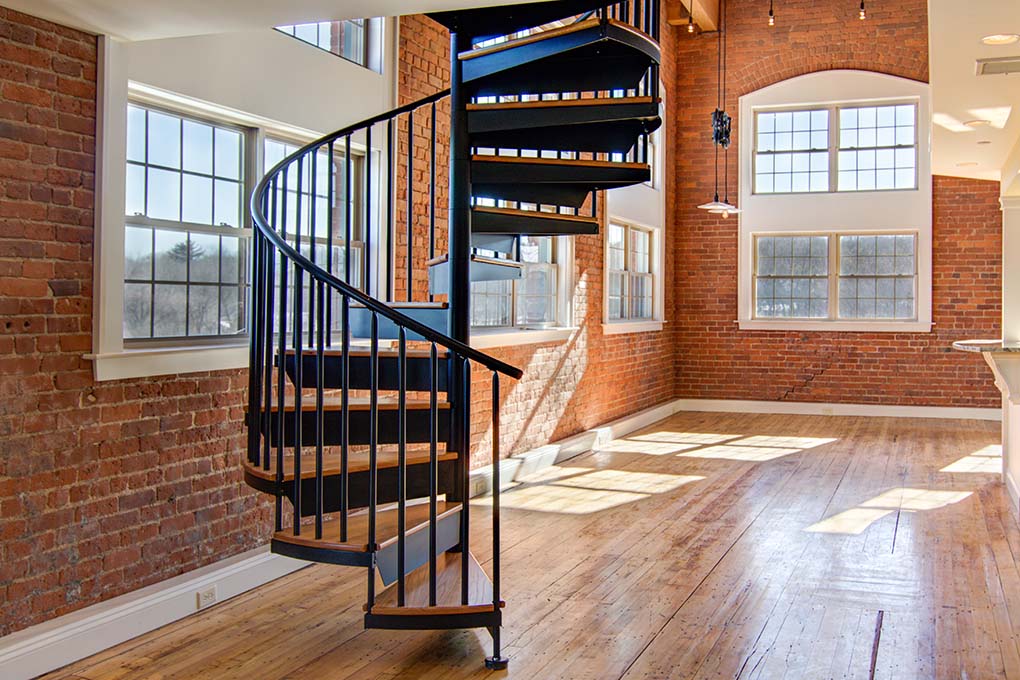
Image courtesy of Salter Spiral Stair
Bifurcated Stairs
These stairs have a wide flight to start, then split off into two narrower sections going in opposite directions at a mid-landing.
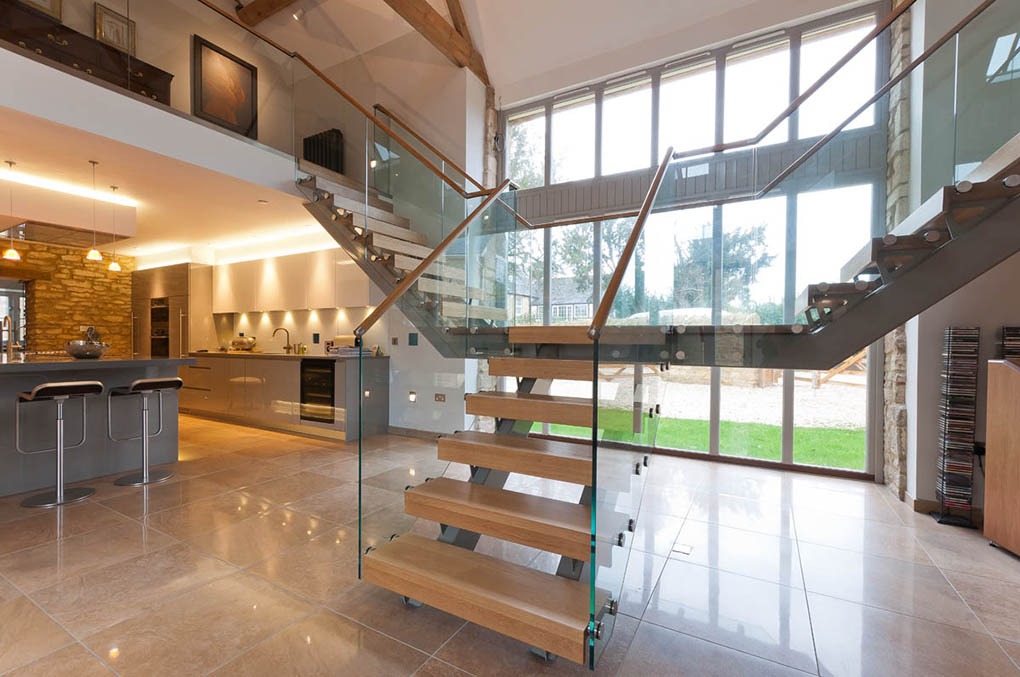
Elements of a Steel Staircase
Steps – Steps are comprised of two sections, the tread and the riser. The tread is the horizontal part of the step that the foot is placed on. The riser is the vertical portions between each treat. Often in steel staircases, the riser of left out, giving the flight an “open stair” look. Nosing is the part of the tread that stick out past the riser.
Starting step (Bullnose) – The starting step is a first step that may have one or two open sides and are often larger than the rest of the steps.
Stringer – Stringers are the structural element that supports the tread and risers. There are usually two – one on either side of the stairs.
Winders – Winders are stairs that are narrower on one side than the other. They are used to alter the direction of the staircase (spiral staircases contain only winders).
Trim – The trim is applied where the walls meet the floor or where the tread and riser meet (think skirting for walls).
Bannister (handrail) – The element of the stair for holding. Steel staircases can have one, two, or no bannister at all. In the case of larger staircases there can be one (or multiple) handrail(s) in the middle of the flight.
Volute – The end of a handrail that curves around the starting step in a spiral shape.
Gooseneck – The gooseneck is a vertical handrail that vaults to reach a higher handrail or the railing of a balcony.
Baluster – Balustrades are the vertical bars that connect the handrail and the tread.
Newel – The newel is a large baluster that anchors the handrail. These are structural elements that often extend below the floor for greater structural integrity. In the case of staircases with an open landing, newels may extend past the landing right down to the floor.
If you are in need of a quality steel staircase or steel fabrication contact Steel Fabrication Services today. Our team of experienced and knowledgeable professionals will ensure that whatever you need will be fabricated to the highest standards, according to your specifications, and delivered when you want and need it.